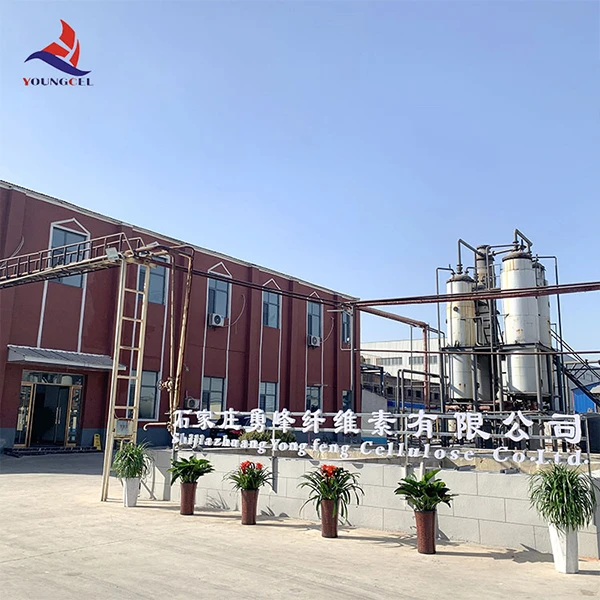The Market Trends of Cellulose Powder Prices
Cellulose powder is a versatile raw material derived from natural sources, predominantly from plants. It is a key ingredient in various industries such as food, pharmaceuticals, cosmetics, and textiles due to its unique properties. As with many commodities, the pricing of cellulose powder fluctuates based on various factors, including supply and demand dynamics, raw material costs, and market trends. Analyzing the current trends in cellulose powder prices can provide insightful perspectives for manufacturers, suppliers, and end-users alike.
Understanding Cellulose Powder
Cellulose is a complex carbohydrate formed from a chain of glucose units, and it is the most abundant organic polymer on Earth. When extracted and processed, it transforms into cellulose powder, exhibiting excellent binding, thickening, and stabilizing characteristics. This white, odorless powder is biodegradable and has gained popularity as an eco-friendly alternative in product formulations.
In the food industry, cellulose powder acts as a thickener, stabilizer, and emulsifier, enhancing the texture and mouthfeel of various products such as sauces, dressings, and ice creams. In pharmaceuticals, it is used as an excipient in tablet formulations. In cosmetics, it serves as a bulking agent and stabilizer in creams and lotions. The diverse applications of cellulose powder drive its demand and subsequently influence market pricing.
Market Dynamics Affecting Pricing
1. Raw Material Availability The cost of cellulose powder is significantly impacted by the availability of raw materials. As it is derived from plant sources, fluctuations in agricultural production due to climate change or natural disasters can cause supply shortages, leading to price increases. For instance, if there is a poor yield in cotton or wood pulp, the supply of cellulose powder can decrease, pushing prices upward.
2. Production Costs The manufacturing process of cellulose powder involves several steps, including pulping, bleaching, and drying, all of which incur costs. Energy prices are particularly influential; a rise in energy costs can lead to increased manufacturing expenses, consequently resulting in higher prices for cellulose powder.
3. Demand Trends A growing awareness of health and sustainability issues has led to a surge in demand for natural and organic products. Cellulose powder, being a natural ingredient, is witnessing increased interest, especially in health food markets and clean-label products. This rising demand can lead to higher prices, particularly if supply cannot keep pace.
cellulose powder prices

4. Global Supply Chain The globalized nature of the cellulose powder market means that geopolitical events, tariffs, and trade agreements can significantly affect pricing. Disruptions in the supply chain can lead to temporary shortages and price hikes, while favorable trade conditions may stabilize or even reduce prices.
Current Pricing Trends
As of late 2023, cellulose powder prices have been witnessing moderate fluctuations. Reports indicate that while some regions are experiencing price stability due to consistent production levels, others are facing inflationary pressures due to supply chain disruptions and increased demand. For example, the North American market has seen a modest increase in prices attributed to rising manufacturing costs and higher demand from the food and pharmaceutical sectors.
Additionally, emerging markets in Asia are driving demand, particularly in the food processing and construction industries. As these economies grow, the competition for cellulose powder can lead to further price increases, complicating forecasts for the coming years.
Future Outlook
Looking ahead, the cellulose powder market is expected to continue evolving. Innovations in extraction and processing may yield more cost-effective production methods, potentially stabilizing prices. Furthermore, as sustainability becomes a higher priority for consumers and businesses alike, demand for cellulose-based products will likely remain strong.
However, it is essential for stakeholders to monitor global trends closely. By understanding the fundamental factors influencing cellulose powder prices, manufacturers and consumers can make informed decisions to navigate this vibrant market successfully.
In conclusion, cellulose powder prices are subject to a complex interplay of various factors, including raw material availability, production costs, and global market dynamics. As industries continue to embrace sustainable alternatives, the cellulose powder market is poised for interesting developments in the coming years.
-
Rdp Powder: Key Considerations for Wholesalers in the Building Materials IndustryNewsJul.08,2025
-
Key Considerations for Wholesalers: Navigating the World of Hpmc - Based ProductsNewsJul.08,2025
-
Hpmc Detergent: Key Considerations for WholesalersNewsJul.08,2025
-
Key Considerations for Wholesalers: China Hpmc For Tile Adhesive, Coating Additives, Concrete Additives, and MoreNewsJul.08,2025
-
Crucial Considerations for Wholesalers: Navigating the World of Construction MaterialsNewsJul.08,2025
-
Key Considerations for Wholesalers Sourcing Additive For Cement, Additive For Concrete, Additive For Putty from Additive Manufacturer Shijiazhuang Gaocheng District Yongfeng Cellulose Co., Ltd.NewsJul.08,2025




